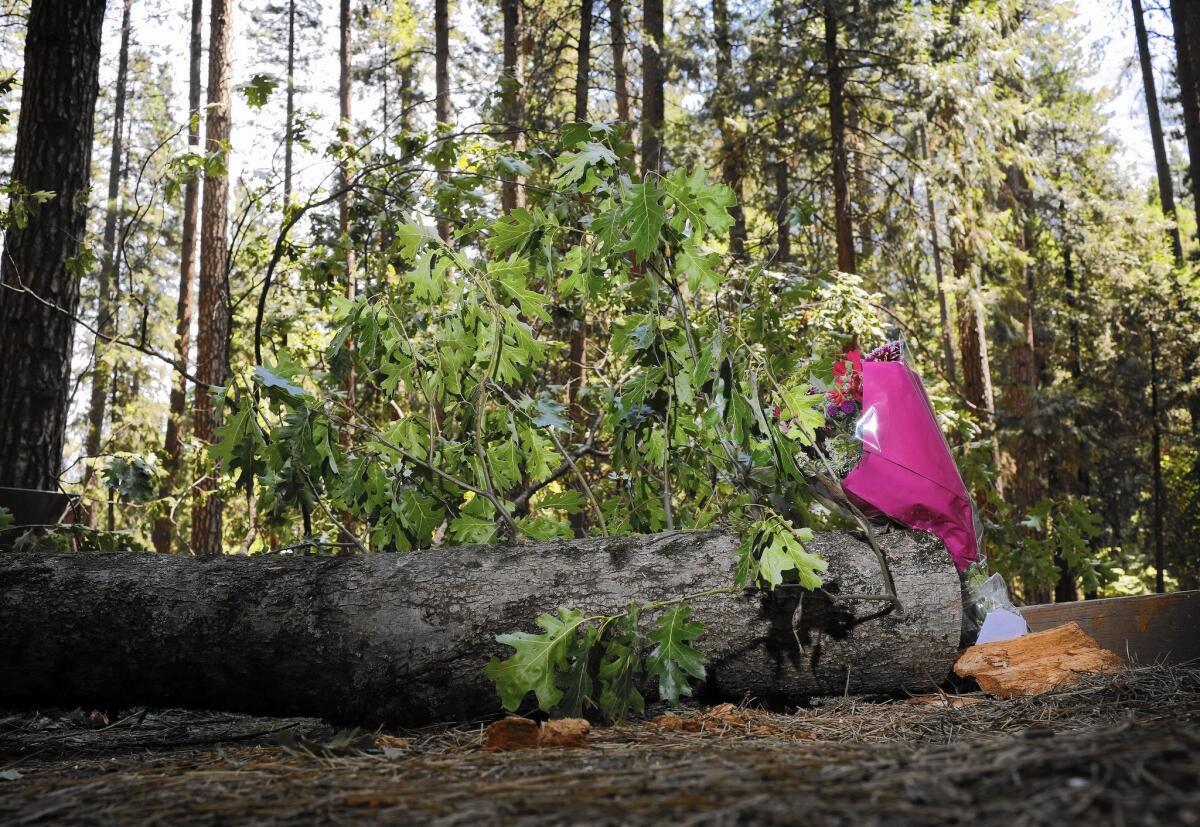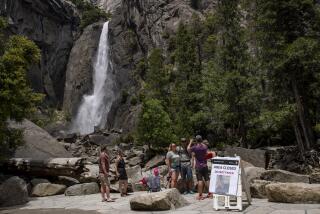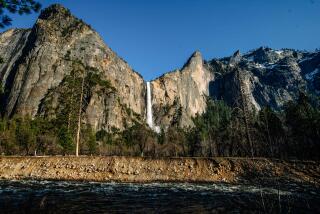Yosemite deaths illustrate a tragic but not uncommon risk in nature

Reporting from YOSEMITE NATIONAL PARK — What caused a tree limb to shear off and crush two sleeping campers in Yosemite on Friday has yet to be determined, but the children’s deaths underscore the National Park Service’s delicate and difficult mission: to manage a wild place.
The park’s foresters don’t know if the black oak tree in the popular Upper Pines Campground was stressed by drought or disease or if the accident was a quirk of nature. Such sudden deadfall is not uncommon here, with 1,200 square miles of pest-ravaged pine trees.
Friday’s tragic accident in one of the nation’s most revered national parks, however, is far from an anomaly: The park averages 12 to 15 fatalities a year. Yosemite’s list of recent calamities could resemble a police blotter: Climbers fall to their death from towering granite cliffs, visitors are swept over rushing waterfalls, wildfires ravage forests and people die from rodent-borne viruses.
There are 10 naturally caused fires burning in Yosemite. And on Monday the park will close its largest campground, Tuolumne Meadows, in an “extremely precautionary public health measure” to apply flea insecticide to rodent burrows to stem an outbreak of plague.
“Yosemite National Park is by definition a wild place,” said park spokesman Scott Gediman. “Rock fall, fires and floods are all a natural part of the ecosystem. Certainly some incidents affect people and visitors are aware of it, clearly. But it doesn’t seem to deter interest in the park.”
This is the frenzied tail end of summer that lures a crush of visitors to Yosemite, wringing out one more family trip before school starts. The Upper Pines Campground on Saturday was bustling, and it seemed that most campers had heard of the accident. Few said they were worried.
“People have been texting me, telling me to watch out,” said Mary Di Monte, who was camping with her husband and three sons under towering Ponderosa pines. Conifers are among the most hard hit of the 12 million trees that have succumbed to the California drought.
“I admit I did look up,” she said. “But you are here in nature and you have to understand that things can happen. It’s something you accept. This is a very special place and important to my family.”
Given the inherent danger in America’s wild places, the park service walks a fine line between warning of potential hazards and scaring visitors away. Bulletin boards in Yosemite are papered with notices about the plague outbreak and cautionary warnings about bears, coyotes and mountain lions.
“It’s a freak accident, a real tragedy,” Colin Williams, who was joining friends lugging inner tubes to cool off in the Merced River, said of Friday’s incident.
Williams, 29, said he was among the first people to see the accident scene and it reminded him that as hospitable as parks are, “We are in nature, and we have to be aware of our environment. Some people think this is Disneyland, but it’s not. It’s magnificent here but you have to watch out.”
Many of Yosemite’s most visited places are surrounded by trees, and accidents have happened. Two tourists were killed and nine were injured in 1985 when a 25-foot oak branch fell 15 feet onto an open-air tram carrying 50 passengers through the park.
The same series of events happened in 1992 when a branch from an oak tree fell onto a tour bus, injuring seven people. The visitors were stopped on a main road near the Merced River to observe Yosemite Falls. The large branch came crashing down while the tour guide was speaking.
Then in 2012, a concession worker was killed when a tree limb crashed onto his tent during a windstorm. The employee, Ryan Hiller, 27, of Chapel Hill, N.C., had been the last person to be killed by a fallen tree limb at Yosemite.
In 2013, a counselor at Camp Towanga, a Jewish summer camp a few miles away from Yosemite National Park, was crushed by a tree that crashed onto a campfire.
Such accidents are rare, and don’t seem to prompt calls for tree culling.
Public land managers resist the temptation to erect fences around sites that are inherently dangerous, but may close trails or certain areas when specific risks are present. It’s not possible to put up a fence around the Grand Canyon or to stop the lava flow at Hawaii Volcanoes National Park, they say.
“There’s just no way to protect people from everything that can happen in a park, any more than you can protect people from everything in the middle of a city,” said Bill Wade, former superintendent of Shenandoah National Park.
“All you can do is give people a fair and reasonable warning about what the most prevalent hazards,” he said.
Noting that a grizzly bear killed and partially consumed an experienced backcountry hiker in Yellowstone Park last week, Wade said that even every precaution cannot protect someone from nature being nature.
“There’s almost no case when an accident is an ‘act of God,’” Wade said. “But this accident in Yosemite comes as close as anything I’ve heard of.”
Times staff writer Cindy Carcamo contributed to this report.
ALSO:
Three killed when two planes collide near San Diego’s Brown Field
In-custody death of man accused of stealing U.S. flag investigated
Silver Lake street serves as a test run for L.A.’s traffic overhaul
More to Read
Sign up for Essential California
The most important California stories and recommendations in your inbox every morning.
You may occasionally receive promotional content from the Los Angeles Times.











